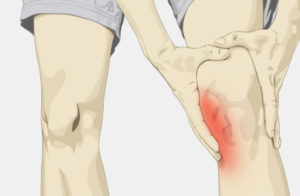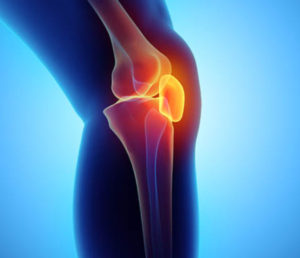doi: 10.1016/j.math.2014.08.013. Epub 2014 Sep 9.
Trunk biomechanics and its association with hip and knee kinematics in patients with and without patellofemoral pain
- PMID: 25261089
- DOI: 10.1016/j.math.2014.08.013
Abstract
Patellofemoral pain (PFP) is a common lower extremity condition observed in sports clinics. Recently, it has been suggested that trunk motion could affect hip and knee biomechanics in the frontal plane. Thus, the purpose of the study was compare trunk kinematics, strength and muscle activation between people with PFP and healthy participants. In addition, the associations among trunk biomechanics, hip and knee kinematics were analysed. Thirty people with PFP and thirty pain-free individuals participated. The peak ipsilateral trunk lean, hip adduction, and knee abduction were evaluated with an electromagnetic tracking system, and the surface electromyographic signals of the iliocostalis and external oblique muscle were recorded during single-leg squats. Trunk extension and trunk flexion with rotation isometric strength and side bridge tests were quantified using a handheld dynamometer. Compared with the control group, the PFP group demonstrated increased ipsilateral trunk lean, hip adduction and knee abduction (p = 0.02-0.04) during single-leg squat accompanied with decreased trunk isometric strength (p = < 0.001-0.009). There was no between-group difference in trunk muscle activation. Only in the control group, ipsilateral trunk lean was significantly correlated with hip adduction (r = -0.66) and knee abduction (r = 0.49); also, the side bridge test correlated with knee abduction (r = -0.51). Differences in trunk, hip and knee biomechanics were found in people with PFP. No relationship among trunk, hip and knee biomechanics was found in the PFP group, suggesting that people with PFP show different movement patterns compared to the control group.
Keywords: Electromyography; Hip joint; Muscle strength; Patella.
Copyright © 2014 Elsevier Ltd. All rights reserved.
What does this Mean?
By Dr. Mark Rathjen PT DPT CSCS
CORE Physical Therapy in Omaha Nebraska
“Compared with the control group, the PFP group demonstrated increased ipsilateral trunk lean, hip adduction and knee abduction (p = 0.02-0.04) during single-leg squat accompanied with decreased trunk isometric strength”
This is pretty simple; patients with knee pain have less trunk strength, less hip control and more abduction at the knee during functional testing.
Conclusion. Trunk strength and hip control are paramount to tackle any knee pain. We have known for years the hips is an issue, but the trunk controls the hip, and the hip controls the knee. Of course it makes sense the trunk and CORE strength would be a risk factor. CORE is a fundamental component of all rehab programs at core physical therapy and sports performance.
At CORE Physical Therapy in Omaha, we emphasize full body rehab, functional pattern rehab, and sports specific rehab. We combat your issue with a multifaceted approach.
C.O.R.E. Physical Therapy and Sports Performance PC,
17660 Wright St, Suites 9/10
Omaha, NE 68130
402-930-4027
At CORE Physical Therapy in Omaha, We specialize in the treatment of athletes. We have worked with athletes for a combined 30 years.
This is who are, This is what we do.
Owned and Operated
by
Dr. Mark Rathjen and Dr. Claire Rathjen.
CORE is a family owned business
est. 2015
We are proud to serve the greater Omaha metro area.
For More information, Please feel free to contact us https://coreomaha.com/contact/
Please feel free to follow us at https://www.facebook.com/COREomaha/
To get started https://coreomaha.com/getting-started/
For more Blog information https://coreomaha.com/blog/
Similar articles
-
Effect of patellofemoral pain on strength and mechanics after an exhaustive run.
Med Sci Sports Exerc. 2013 Jul;45(7):1331-9. doi: 10.1249/MSS.0b013e3182880019.PMID: 23377834 -
J Orthop Sports Phys Ther. 2012 Jun;42(6):491-501. doi: 10.2519/jospt.2012.3987. Epub 2012 Mar 8.PMID: 22402604
-
J Back Musculoskelet Rehabil. 2016 Apr 27;29(2):259-266. doi: 10.3233/BMR-150622.PMID: 26406201
-
Altered Hip Mechanics and Patellofemoral Pain. A Review of Literature.
Ortop Traumatol Rehabil. 2016 May 5;18(3):215-221. doi: 10.5604/15093492.1212855.PMID: 28157077 Review. -
Braz J Phys Ther. 2018 Mar-Apr;22(2):105-109. doi: 10.1016/j.bjpt.2017.10.002. Epub 2017 Nov 8.PMID: 29157738 Free PMC article. Review.


